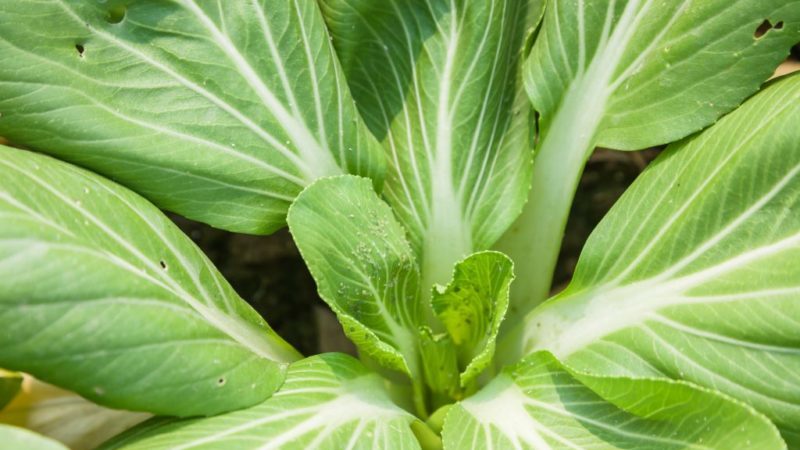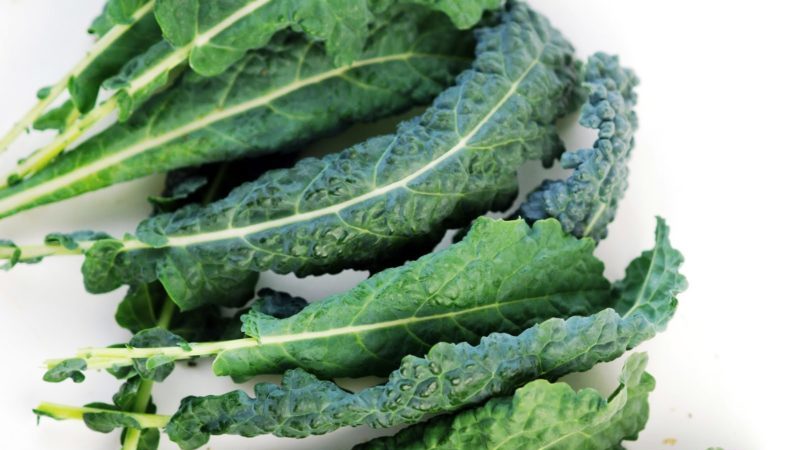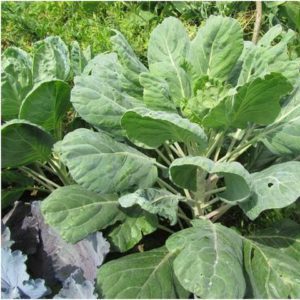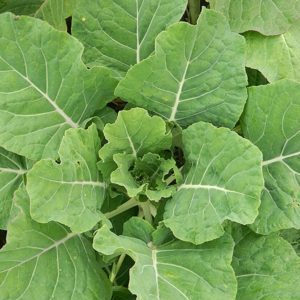Kale: photo, description of varieties, collection technology
Kale is a valuable plant. It gives a large yield of highly nutritious feed. 100 kg of green mass accounts for 1.76 kg of pure digestible protein with a rich composition of amino acids. The culture has many different biological types, so in Russia it is grown from the Arctic to the subtropics.
The content of the article
Description of kale
Kale is a biennial crop of the Cabbage family. A tall plant consists of a cylindrical and fusiform (it appears in the second year of life) stem. It reaches 2 m in height and 10 cm in width.
Has smooth leaves covered with a waxy bloom. The shape and color of the leaves are different depending on varieties... They do not form a head, but are attached to the stem by cuttings.
In the photo - forage cabbage.

The stalk of forage cabbage is rough, but inside is tender and juicy, therefore, it is also used for animal feed.
This cabbage is cross-pollinated. The female and male flowers form on different plants. The inflorescence is a loose raceme reaching 80 cm in length. It has white or yellowish flowers up to 5 cm in size. After pollination, the formation of a cylindrical pod (fruit) begins.
Growing requires certain costs, but they usually pay off many times over. Among the advantages of using a plant as food are the following:
- The culture is unpretentious in comparison with other types of cabbage.
- Both the leaves and the stem are used for feed.
- Suitable for feeding almost all types of livestock and birds.
- Relatively large yield per unit area (about 300-350 kg per 100 sq. M). White cabbage is capable of producing higher yields, but its cultivation is immeasurably large.
- Farm animals eat forage well.
- When the plant is included in the diet, cows and goats produce more milk. Also, feeding such cabbage to chickens increases egg production.
- High nutritional value. This culture is only slightly inferior to oatmeal, but at the same time it is ahead of absolutely all root crops.
- Contains vitamins, minerals, amino acids, fiber.
- Has a long shelf life. The plant is used even when it is frozen.
- Possesses excellent frost resistance.
Kale contains a small concentration of mustard oils. They disrupt the endocrine system in both animals and humans. Therefore, it is included in the diet in doses. Also, with a large proportion of fodder cabbage in the cattle ration, mustard oils begin to penetrate into the milk, which is why it acquires a bitter taste.
To increase milk yield and maintain milk quality, the maximum daily intake of kale is monitored. Its share should not exceed 25% of the total mass of green forage. This is about 15-20 kg.
It is interesting:
Salt cabbage in one day quickly and tasty.
The percentage of nutrients in forage cabbage:
- about 15% proteins;
- 17.5% protein;
- 3.4% fat;
- more than 40% nitrogen-free extractive substance;
- about 100 mg of vitamin C per 1 kg of green mass;
- almost 50 mg of vitamin A per 1 kg of green mass.
Sulfur, calcium and phosphorus are also present in this plant, making it a valuable product for use in animal husbandry. It is well digested, quickly saturates thanks to proteins and carotene, and has a pleasant smell.
Important! After freezing, the plant retains its properties. The animal eats thawed cabbage as well as fresh one.Some farms dry the foliage and then add it to their feed as a high protein supplement.
How to harvest kale

Cabbage is mowed at the root, since all the components are suitable for use. They try to harvest as late as possible, because this is precisely the meaning of growing a crop - to provide animals with fresh food in late autumn and winter.
Yellowing of the bottom of the plant is considered a sign that the cabbage is ready for harvest. This occurs approximately 100 days after planting. Often, by this time, there are no other crops in the fields, since the first frosts have already passed. In the middle lane, this period falls around mid-November.
Important! If the plant is completely frozen, it must be thawed before feeding.
After harvesting, forage cabbage is given to the animals fresh or as part of silage. In the first case, she is sent to the basement. There are no strict requirements for temperature indicators, the cellar is only regularly ventilated. There the crop can be stored until February. Also, fresh cabbage is stored in the open air in stacks. Before feeding it is thawed.
During ensiling, the plant is crushed and used as an additive to other feed.
Kale varieties

Many varieties and hybrids of fodder cabbage are known. The most suitable for growing in Russia are:
- Brain green. The stems are powerful and purple in color. The plant forms many large purple-green leaves. The variety is not able to withstand prolonged drought and is weakly resistant to pests.
- Brain green siverskaya... This variety was bred by specialists from St. Petersburg from Mozgovoy green. Wrinkled, large oval-shaped leaves are fixed on long cuttings. The stem is straight, wide, without ramifications. A distinctive feature is its relatively large size. There are no shoots on the lateral buds. The plant is susceptible to bacteriosis and sclerotinia. The variety is more productive than the previous one.
- Thousand-headed or yarrow. Cabbage has abundant foliage, although the leaves themselves are small. It branches well and has a beautiful shape. It tolerates bacteriosis normally.

- Milestone. The undemanding variety is suitable for growing on small farms where there is no opportunity to use serious agricultural equipment. It grows quickly and gives a good harvest. The yield of green mass is 566-960 c / ha, dry matter - 76.0-168.9 c / ha. The protein content in dry matter is 11.4%, digestibility is 77.8%. The growing season is 142-180 days. Weakly affected by peronosporosis, vascular bacteriosis and pests.
- Boma (Boma). The drought-resistant variety gives the largest yield - up to 1 ton per 100 sq. m. The plant tolerates frosts well down to -14 ° С.
Conclusion
Fodder cabbage is used as food for absolutely all types of farm animals and birds. Thus, they significantly accelerate their growth and productivity, including the number of eggs and the volume of milk yield. This plant is able to withstand almost any climatic conditions, and its cultivation does not require large labor and material costs.